I J Larivers
“Nott, Graham Morley (6506) Attested: 09 October1961. Last Rank: Section Officer Died: 16 July 2002 Place Unknown, Zimbabwe.” Is the rather overly concise entry on the In Memoriam page on the website of the British South Africa Police.
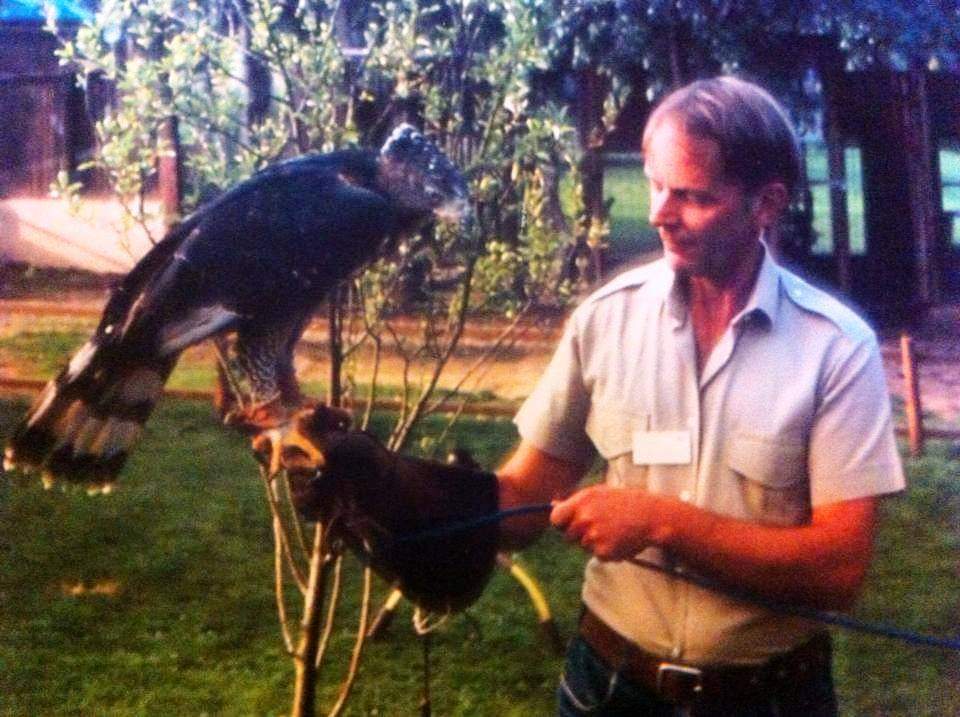
The Gordian Knot is a legend which is often used as a metaphor for solving a seemingly intractable problem, such as untying an “impossible” knot by thinking outside the box. It has been artfully selected as a chapter heading – “The Gordian Nott” in Mike Bromwich’s excellent book National Parks and Wildlife Management, Rhodesia and Zimbabwe 1928 1990. For sadly Graham who was a friend was never “one of the boys”. He couldn’t be. It’s in The Rule Book, under “Them and Us”. He was National Parks’ first Chief Investigation Officer. And I don’t believe anyone can begrudge any of the Dagga Boys, as the National Parks old boys are known, for their feelings in this vein. Something like Investigations Branch functions in part in much the same way as an American police internal affairs division the “headhunters” does. And they’re not going to win any popularity contests among their brother officers, whom part of their job is to investigate. But, looking back on the carnage that has swept through Zimbabwean conservation areas in the two decades since Graham’s retirement I’d bet a case of cold beer that though they’d never admit it, more than one of them would be happy to see his like return today.
The late Graham Nott, founding Chief of Investigations for National Parks.
Of course, there’s the whole (reverse) racial thing, which shouldn’t need to come up at all but does. I experienced it probably most pointedly when I worked for the Nature Conservation Division in Bophuthatswana. And the funny thing was that it wasn’t even ethnic racism, for the aggrieved parties I was “persecuting” where white, as was I. So I was perceived as “letting the side down” because I basically wasn’t letting them do as they pleased. Most of it was blamed on the fact that I was a non Afrikaans speaking uitlander, rather than it possibly having anything to do with the fact that I was doing the job I was paid to do.
But a couple of things a lot of folks don’t see or don’t bother even looking for are firstly that there were problems with certain individuals and/or practices within the department (which should be thought about when considering who’s actually “letting the side down”, and no, I am not talking about the infamous elephant export scandal, more of which later) that had to be addressed, and secondly that investigators consider this looking inwards as a complete waste of time and resources. Unlike their internal affairs counterparts, their job is not to catch their fellow officers but to tackle the poachers and wildlife traffickers from a covert angle. And It’s worth noting here that back in the day, when Investigations Branch was formed, the National Parks uniformed personnel had very efficient networks of informer sources and they managed their anti poaching teams capably, and there was some concern that the new Branch would trample on their toes – so in a way there was even resistance from within to Parks investigators tackling the poachers and traffickers. Going after the bad apples in house just wastes investigators’ time. But they have to do it. And hopefully their investigations will result in exoneration. Sometimes the bad apples aren’t even really bad, but government works – or should work, and did much more so in Graham’s day – like the diplomatic corps, insofar as what you are seen to be doing is just as important as what you are doing.
I first heard of Graham when I was in Bophuthatswana. He had been tasked – more or less by Robert Mugabe himself, which was to later save his life on at least one occasion – with creating an investigations branch within Zimbabwe National Parks. He was a veteran policeman, with a good, solid record and not in any way one of the “good ol’ boys” in conservation circles.
My government of the time in Mafikeng wanted to put the homeland on the map for foreign sport hunters, and as the flagship Pilanesberg in those days was a parastatal game reserve and not a government entity as it later became, my colleague Hans Koenig suggested sending a representative from the government to the Safari Club International convention – which role he filled himself owing to his hands on knowledge of what was happening in Bophuthatswana, and also originally being from Reno. It was there that he met Graham.
Later, after Graham’s death, I wrote to Hans, then a game warden back in the ‘States, and asked him for more specifics – Graham had warned Hans about possible improprieties in Bophuthatswana, which was sort of a magnet for ex Rhodesian national parks, police and military. By then, two decades had lapsed. Hans’s reply was somewhat vague:
“Graham. I recall talking to him on the phone and maybe a short letter. He implied that there were some unlawful activities going on in the Bop. This had to be before the arrival of Bob Thomson in Mafikeng. At one point, Graham told me something like, “…If you look hard enough, you’ll find it…” What he meant by it was the person or persons involved in the activities. Why he didn’t just spell it out was a mystery to me. Maybe he didn’t know either.
The name Alec Rough was mentioned by him sometime in one of these discussions. You’ll recall that he was the partner in the game capture outfit along with Nico Roux. Rough was the helicopter pilot, reportedly came from money. It didn’t show. I unfortunately cannot remember the implication, nor the alleged violations. I suspected that Rough was the one who told Jeremy Anderson about the game theft that involved Charlie Stopforth. I always thought that it was a move by Anderson to consolidate his authority and dissolve the (Nature Conservation) division.”
Jeremy Anderson’s dream was to create a national parks board along the lines of the Rhodesian model in Bophuthatswana. Obviously with the Pilanesberg as its keystone and himself ensconced in the director’s office. The Nature Conservation Division was in the way and had to go. Kind of like Investigations Branch. It was probably something Graham was hoping Hans could corroborate for him. You have to remember that, although brothers in the same fraternity, we didn’t know each other all that well, and, as with our counterparts in South Africa we were always wondering if we could trust each other. The reference to Charles Stopforth, who was the Assistant Secretary for Agriculture in Bophuthatswana then relates to our being where we shouldn’t have been when we shouldn’t have been, and stopping a truckload of live game passing through Mafikeng. The game had been captured from the Pilanesberg, siphoned off, and was then on its way to Stopforth’s farm in the Northern Cape. We hadn’t been approached to issue the relevant permits, and in fairness I’m sure Jeremy Anderson – the director of the Pilanesberg knew nothing about the clandestine “off take”, and I don’t believe the capture company did, either, insofar as they would have assumed it was legitimate. Given that Stopforth wrote the permits it wouldn’t have been an easy one to pursue at our pay grade, so the only one we told we knew about it was Charles Stopforth. Right or wrong, it suddenly became a lot easier for us to get vehicles, radios and firearms for the Nature Conservation Division.
By this time, back in Zimbabwe, I had come to know Graham well. He didn’t have many friends, but this is an occupational hazard for a policeman, and certainly an offhanded compliment – it means you are good at your job. He had a clearly defined sense of right and wrong, and he’d never work with the bad guys – knowingly or for any ulterior motive. He was also your archetypical “Fabian of the Yard” sort of traditional cop – he had an enquiring mind, and spent a lot of his last years with the Department in the computer room (which boasted some coal driven antique running Windows 3.1) or trying to iron the quirks out of the newfangled encrypted Motorola SSB radios he’d insisted the Branch acquire – but his idea of solid police work was sore feet at the end of the day.
He was a good administrator. You have to be, in government service, lest you not be able to account for every one of your actions and get unduly weighed down by all the knives in your back. And as the chief investigator for a high profile department, you become by default the biggest duck in the shooting gallery. Having left the police as today’s equivalent of an assistant inspector, he was by then comparable to an assistant commissioner. The Branch was small in those days – stations in Harare, Bulawayo, and Mutare with offices in places like Kariba and Beitbridge. Graham’s 2i/c and the Senior Investigation Officers were also ex BSAP, superbly trained and dedicated. Easy to run, to and use to optimum effect.
Graham was instrumental in re designing the department flag, and introducing new insignia of rank for Parks personnel, which allowed equivalents to be recognised between National Parks, the police and the army. This did a lot for morale. But it seems the only thing he is remembered for is the “fancy new” Investigations Branch ID card, which was supposed to confer mystical powers on the bearer. There was nothing fancy or new about it, and all it basically was was the Department’s card with two horizontal red stripes through it. A peace officer’s authority comes from acts of parliament and statutory instruments, not an ID card and everyone should know this.
Graham’s gut instincts were good – very good. He wasn’t used to being wrong, and he generally wasn’t. But if he had failings, and we all do, they were that he was too convinced of his own infallibility to the point where once he’d lowered his horns and begun the charge God himself would have a hard time convincing him he might be wrong, and – surprisingly – a degree of naiveté which would eventually lead to some of his biggest problems in the department. He believed in looking you in the eye when you spoke, and he had a firm handshake – generally synonymous with someone who lacks the guile to comprehend, much less deal with, the insidious quagmire that is African politics. He assumed, way too far, that if he was a straight shooter, so would be other officials and sources. A word in his ear at the right time or by the right person was all it needed to launch him in a certain direction. Against the early 1990s backdrop of a power struggle between various conservation groups and the country’s ruling political party, ZANU PF there was no room for naiveté.
Dr Willie Nduku, the National Parks director back in the day was an extremely competent man and a bona fide scientist. But because in the 1970s he had supported the offshoot ZANU Ndonga party, he was not a political heavyweight and was seen by some politicos as a loose cannon. At the time of writing, I can confidently say that he was the last real director that National Parks has had.
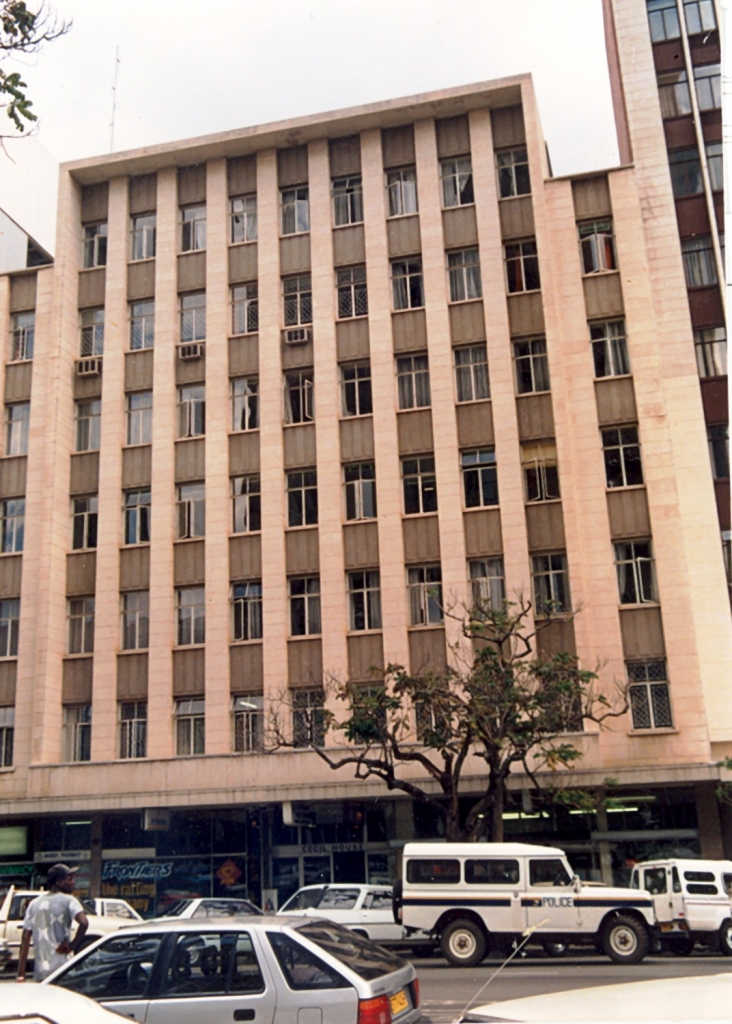
Deputy Director Dr Rowan Martin (nothing to do with Laugh In, though his saga later had some of the trappings of bad comedy) faced various corruption charges: inappropriately accepting the gift of a Toyota Land Cruiser from the International Rhino Foundation’s Ingrid Schroeder in exchange for facilitating the export of black rhino to the ‘States and Australia (in hindsight a very admirable move) and misappropriation of funds stemming from allegations of illegally exporting two hundred elephants to Bophuthatswana for about Z$10 million during the 1992 drought.
Nduku, sadly, for he was a good man and a first rate biologist, was simply in the wrong place at the wrong time, and it was his office where the buck had to stop. He didn’t do anything wrong and he had his men’s backs, and that cost him his job.
Martin was also a very capable conservationist, but on top of that something of a local hero, and demigods do not necessarily have to follow the rules laid out for mortal men. Or so they think. No charges were ever proven against him, and I believe it’s safe to say that his victimisation was merely a political expedient perpetrated by Nduku’s successor Willis Makombe – who was neither a good conservationist nor a capable administrator, but rather the embodiment of all that is wrong with a third rate politico. Like Nixon should never have bought that tape recorder, Martin should have cleared the vehicle with the Parks board.
Then there was Gordon Putterill, who had been the warden of the Gonarezhou national park. Putterill had been reprimanded in 1992 for (legally) shooting a number of cattle that had strayed into the park during the drought, and he had also been arrested for (also, quite legally) shooting a poacher. His actions had been justified. But because of the 1992 drought, as warden of Gonarezhou he was also caught up in the elephant export scandal. Which was basically the allegation that the government had been prejudiced of some $2.5 million dollars in an “elephant fire sale” to Bophuthatswana.
Graham Nott’s main concern, as a good, old fashioned policeman, was where the money had gone, if in fact it had gone anywhere. In the process, he became the pawn of Makombe’s faction. Putterill always kept threatening to name names and expose those who needed exposing, but in the end he never did. I wish he had. If he really could have, and it wasn’t just talk. Maybe one day…
The elephant export scandal was much more complicated than I need to go into here, but for those who might want to understand the background, Rosaleen Duffy’s Killing for Conservation – despite not reflecting a lot of my personal views in general – gives a good factual account of the intricacies involving the German government, Swiss bank accounts, and all the good stuff, culminating in the export of two hundred elephant to a government Zimbabwe didn’t even recognize. Unless cash was involved, of course.
There is no evidence that it was an unsound management practice, but Graham figured the government should have realised a lot more money from the sale. Any school kid with a calculator would have come to the same conclusion. It was front page news, and as Graham said to me one day, the best place to hide something is in plain sight. His only concern was whether or not any money had been diverted. It was his job to investigate, and although I was not involved in this case at all, Madikwe had been one of my districts in Bophuthatswana a decade previously and all I remembered was barren, over grazed bush. I probably didn’t help matters when, early on, I commented that if they were going to put two hundred elephant there they’d probably have to feed them on KFC because there wasn’t much else. But a lot can happen in ten years, and the Madikwe Game Reserve some 90km north of Zeerust is now the fifth largest game reserve in South Africa, and its 680 km2 are today regarded as one of the better conservation areas in Africa.
Suffice it to say that the scandal brought about the downfall of Nduku, Martin and Putterill, and this in turn tarnished the department’s image and caused the mass exodus of a number of very capable and dedicated Parks staff. Not Graham, though it would be an understatement to say that Makombe was afraid of him. A guy like Graham wouldn’t look the other way in future, and that scares men like Makombe.
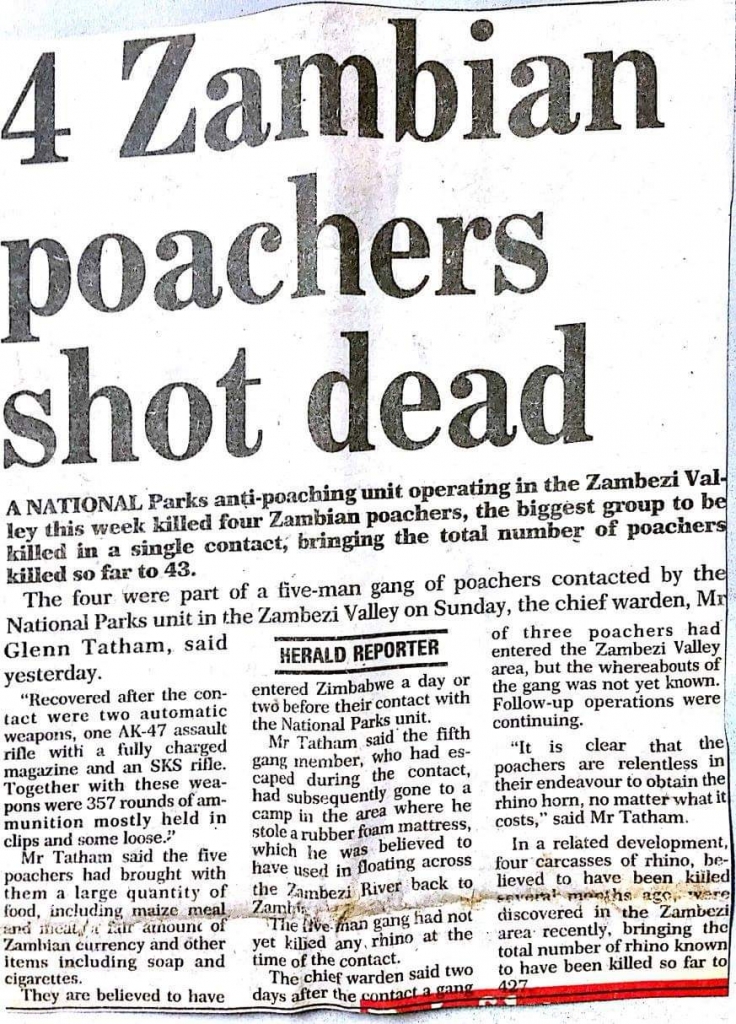
The halcyon days of Operation Stronghold
A good example of this exodus would be one of the living legends of National Parks in those days Warden Clem Coetzee, who had perfected the capture and translocation of rhino and elephant into a true art form. He was part of the collateral damage stemming from the elephant export scandal, and the late Keith Meadows, in his otherwise very readable Sometimes When it Rains tells the story from his and Clem’s perspective – although his research didn’t extend to actually getting the spelling of Graham’s name right. It comes across as a little too much of a rant. I don’t know how much documentary evidence he consulted, and he admitted to Graham’s widow that he had neither met not even spoken with Graham himself:
“A dogged campaign of harassment by a maverick element of the National Parks was mounted against several members of Parks staff. It was spearheaded by the National Parks investigations branch headed by Graham Knott (sic). The principal targets of his investigations – over zealous to be charitable, but malevolent in the eyes of many – appeared to be the then head of Parks, Dr Willie Nduku, and the head of Parks Research, Dr Rowan Martin. But the fallout covered a considerably wider area and bemired a number of other people. Ex warden Clem Coetsee was one. He was accused of participating in the clandestine export of two hundred elephant to South Africa, in which he and others had amassed millions of dollars for themselves.”
Graham faced a lot of this sort of “How can he do this to us – we’re white, after all!” mindset, but give me a break. Two and a half million dollars, had it existed, was a lot of money, and we all know that the same fine, upstanding folk who bemoan their friends having been investigated in one context would be morally outraged if they picked up the paper and read about two and a half million dollars going unaccounted for in some other context and it wasn’t thoroughly investigated! In the end the government had been prejudiced because the animals were under valued, but there was no evidence anyone had siphoned off any illicit funds. Establishing this fact was what Graham was paid to do. And what the hell use is an under zealous investigator, anyway?
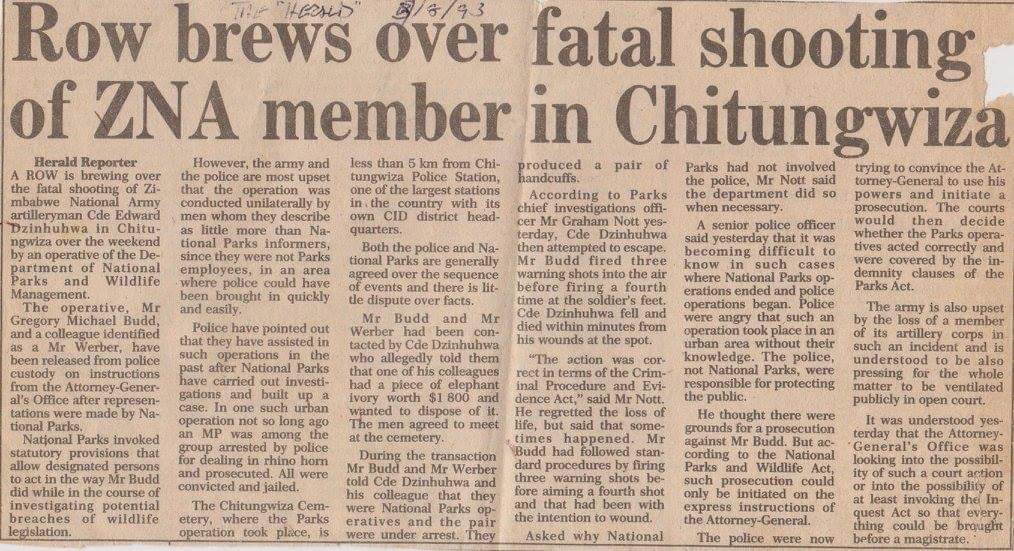
There has been a persistent rumour going around for some time now – which as far as I know surfaced after Graham’s death, which is about as behind the back as you can get, that he was on the payroll of the South African Defence Force during his time in government here, with the brevet rank of captain. That would be something out of the same mould as folks like the Bawdens and Kevin Woods of The Kevin Woods Story: In the Shadow of Mugabe’s Gallows fame (don’t get me started on trying to capitalise on your own traitorous stupidity). Trouble is, the Graham Nott I knew was a man of principle, so I never thought that shoe would fit. But, why be subjective?
When I worked on contract in Iraq in 2003 4 I made the acquaintance of a number of formerly high ranking SADF officers, half-colonels, including a couple in the intelligence sector, who had now gone commercial. I also know an ex SADF officer and attorney in Pretoria who knows how to navigate through the files of that country’s post independence Truth and Reconciliation Commission, not to mention more than one former Zimbabwean intelligence officer.
So, even though I thought I knew what the answer was likely to be, I asked. In a day when that kind of information should be water under the bridge, and a threat to no one, it was news to all these folk. No one knew anything about such a transgression. It didn’t really make all that much sense anyway – though National Parks was a key player in national security because of their presence on the ground, I don’t believe they would be that effective a target in order to cause major destabilisation to the government, nor would Investigations Branch have been the most effective conduit.
The 1987 murder of Parks investigators Martin Marimo and Martin Sibanda near Gonarezhou is sometimes brought up to strengthen the theory of an SADF connection. The (il)logic being that because the killings appeared to have been carried out with military precision, it must have been done by an SADF special forces unit which had been infiltrated from neighbouring Mozambique where they were engaged in the support of the anti-government rebels. That’s really over-reaching, but it does make good fiction. There were crack military units a lot closer than Mozambique – in and around Gonarezhou, and they weren’t South African. Organisations like the Environmental Investigation Agency and Amnesty International do have their uses from time to time, and even they seem to have homed in pretty unerringly on who the real culprits are likely to have been. Of what importance to Pretoria would two Zimbabwe investigators looking into the poaching and illegal trafficking of wildlife from the Gonarezhou be? If the goal was any form of destabilisation, Zimbabwe government forces knocking each other off without any help was pretty close to as good as it gets.
Another rumour that makes the rounds from time to time is that Graham was secretly in the employ of the overseas anti-hunting animal rights activists. That somehow he was being manipulated by the Greens to bring about the downfall of the department and bring an end to Zimbabwe’s pro-sustainable utilisation model of wildlife management. Huh? Had he actually been involved in such a scheme, the safari industry was far too ensconced and such a prolific source of much-needed foreign currency that the government wouldn’t have allowed that kind of interference.
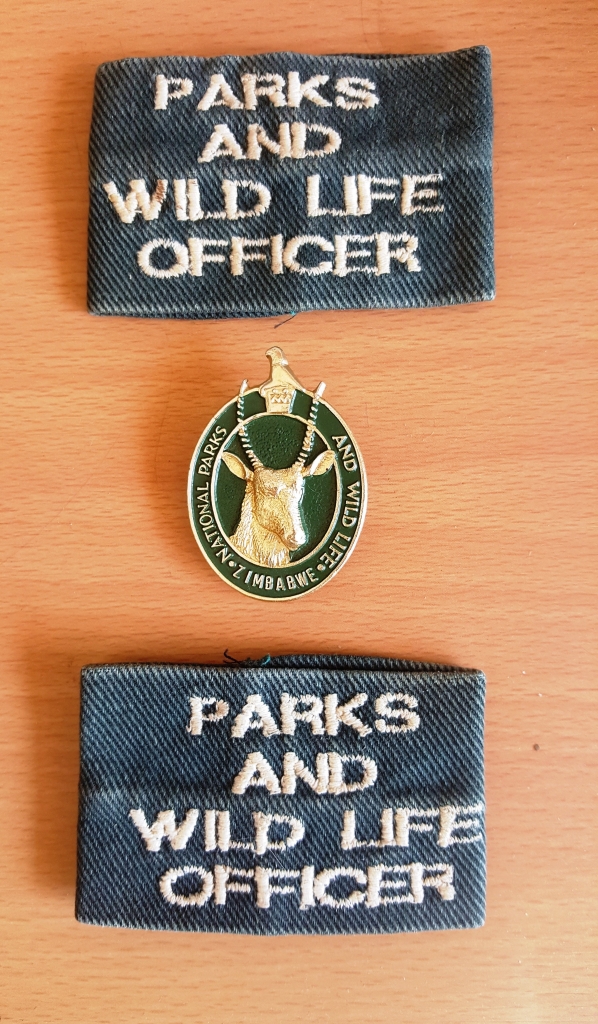
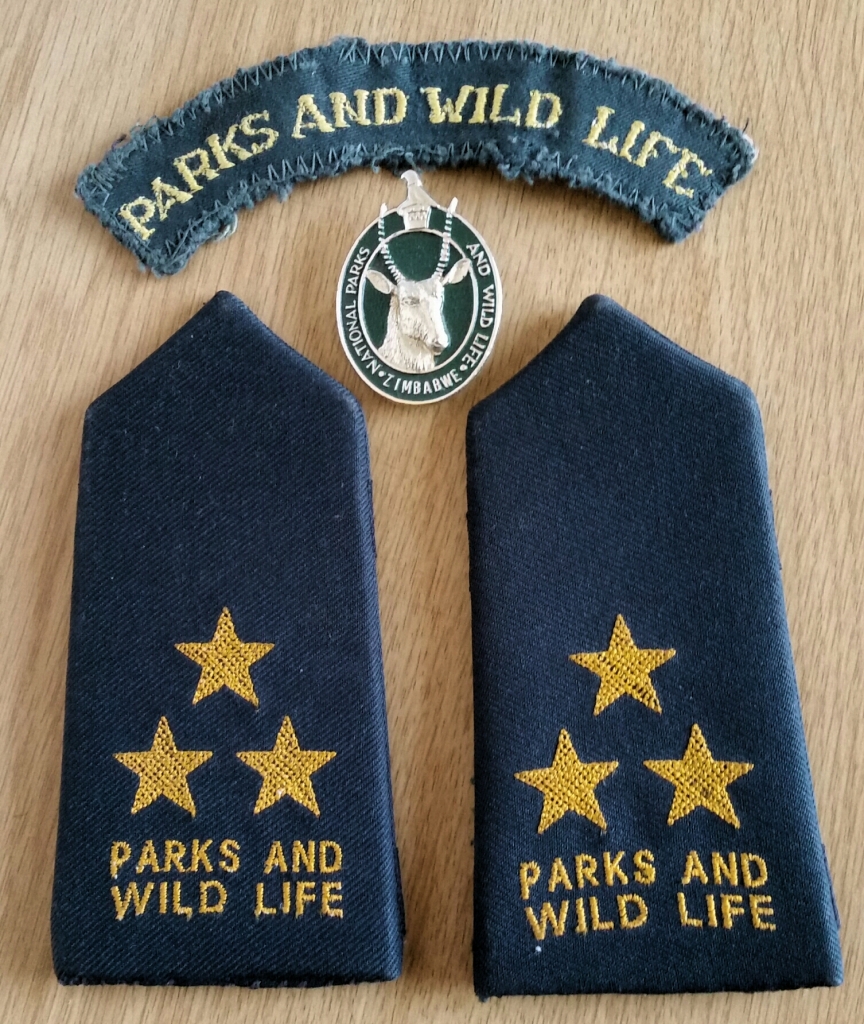
But the fact is, Graham was involved with foreign NCOs – just not the kind that fit nicely into the conspiracy theorists’ tidy little models. He was seeking support from pro-utilisation groups such as Safari Club International to provide resources which the Zimbabwe government and his relatively well-off department couldn’t be bothered to allocate. Just as Warden Graham Hall had out-sourced funding to purchase an aircraft for his official duties, so Graham acquired materiel such as four brand new Toyota Hilux 4×4 pickups for undercover work, and the latest state-of-the-art encrypted Motorola SSB radios.
And while we’re on the subject of animal rights reactionaries, it was Graham who told me one day to drop everything and come up with a plan and try and infiltrate the Environmental Investigation Agency – as much for the Central Intelligence Organisation as for Investigations Branch – and we all know who the EIA is and who they work for. Just another big business. I’m afraid while that’s all good cocktail party intrigue, the only evidence I ever saw was to the contrary.
In June 1992, Senior Assistant Police Commissioner John Chademana and two ZRP Inspectors, Themba Ncube and Justice Chengeta were convicted by the Harare Magistrate’s Court following their prosecution for having poached a buffalo near Kanyemba. In 1993, the Supreme Court conditionally suspended the five month jail terms imposed by the magistrate’s court and instead ordered fines of $1,000 for each accused. Significantly, the Supreme Court refused to overturn their conviction. In the words of Justice Ephraim “What they deposed did not bear scrutiny and could not be said to be possibly true and the magistrate could not be faulted for convicting them.”
They had illegally hunted the animal in the Chewore Safari Area and had assaulted a National Parks Game Scout, Isaac Ponde, when he challenged them. The Supreme Court’s decision was based on the fact that the offence of poaching had attracted only a fine, and therefore the custodial sentences for obstruction were excessive. Given the fact that the three were policemen should have resulted in a stiffer sentence for the crime of poaching, but under the circumstances the Supreme Court’s judgment seems, sadly, reasonable.
Interestingly, in post-“land reform” Zimbabwe, Justice Chengeta is now a Senior Assistant Commissioner at Police General Headquarters in Harare, which is indicative of the major problem facing conservation enforcement in Africa today – lack of transparency, and a failure to view wildlife offences as serious crimes. He was not the only one we arrested over the years who had been quietly released and welcomed back into the system with open arms should they have the right contacts or uses.
During his investigation of this case, an attempt had been made on Graham’s life by rogue elements within CID homicide. They threw a loose cordon around Investigations Branch headquarters in the CBD, and attempted to seize the docket and take Graham into custody. He managed to lock the docket away and escape into Cecil House, but was not able to leave the building. At the same time, another team had been dispatched to his house in the suburb of Marlborough, and managed to break down his door and terrorize his wife before the Minister under which National Parks fell, Victoria Chitepo, personally arrived and chased them off.
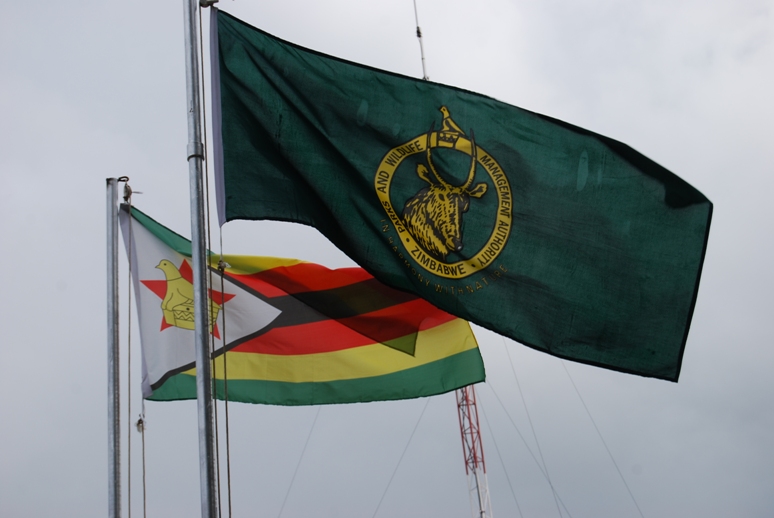
Graham had Robert Mugabe’s ear if he needed it. Significantly, the two police raids were carried out while Mugabe was temporarily out of the country. Graham hid in Cecil House for two days. As the police action was illegal and other security-related departments like Customs Investigations were also housed there, they couldn’t be too overt. Eventually Graham got a call through to Mugabe.
Mugabe dispatched the Attorney General, Patrick Chinamasa in person together with a senior commander in the Presidential Guard to safely extricate Graham and take him to State House. After listening to Graham’s story, Mugabe was silent for a moment, then looked up and quietly said “This could have been me”. Mugabe ordered that the investigation proceed unhindered, and Chademana, Ncube and Chengeta were all convicted. Oddly, Graham’s detractors never tell stories like this one. Or his prosecution, for example, of Chief Warden Arthur Wood, which was good, solid police work that led to a successful conviction. And they never mention Graham’s investigations into very senior government officials outside of National Parks, which could easily have cost him his life. Basically what I’m saying here is that if you’re going to put cards on the table, put them all on the table. Trouble is, “the Gordian Nott” is an emotional topic, so it is going to get seen one way or the other. That’s just the way it’s going to be. In National Parks and Wildlife Management, Rhodesia and Zimbabwe 1928 1990, Mike Bromwich fairly sums up his treatment of these times by saying that since Graham Nott has passed on, we will never hear his side of the story. And there is a lot more I would like to know about the murders of Martin Marimo and Martin Sibanda, the death of William Hove, and a number of other cases.
There is a lot I probably don’t know, but Graham – not that he would have bothered to try and justify his actions anyway – is at the ultimate disadvantage. Having passed on, with the majority of his detractors still in full cry. Why do they never bring up the Protection of Wildlife (Indemnity) Act, Act 21 of 1989? Graham promulgated this piece of legislation after National Parks Chief Warden Glenn Tatham, Warden Steve Edwards, and police Inspector Charlie Haley were arrested and charged with murder following from the fatal shooting of a poacher and rhino horn trafficker who was in possession of an AK 47 and six rhino horns when the contact ensued. In the late 1980s, this three man black ops team literally stemmed the tide of poaching incursions into the Zambezi Valley. There was no murder – the deceased was a relative of a politico, and all charges were soon dropped. This piece of legislation indemnifies peace officers from arrest and prosecution for acts committed in good faith to combat poaching. To this day, it allows anti poaching teams to operate at their most efficient without fear of political reprisals. It benefited uniformed staff in the department much more than anyone else.
Police CID Superintendent Charlie Haley on APU operations in the Zambezi Valley
And what about the minimum mandatory five year prison sentences introduced at the same time? Through Graham Nott’s efforts. Next to a bullet in the head, about as efficient a deterrent as you’ll get in Africa.
It was Graham’s subsequent investigation of the late Senior Assistant Commissioner Winston Changara on allegations of poaching on state owned farms in the Battlefields and Featherstone areas, and even Matusadona National Park, that was to be his downfall. Graham had quietly amassed a formidable docket which Attorney General Patrick Chinamasa abruptly ordered handed over to Police Commissioner Augustine Chihuri for “further investigations”. There was a good working relationship in those days between Graham and Robert Mugabe, but this was one time the president couldn’t help. Changara was not only his aide de camp (among other things, he would know where all elements of the security forces – including National Parks patrols would be at any given time), but also his nephew. Graham’s docket never again saw the light of day.
At the same time, while the Zimbabwean currency remained strong, there was a very generous “voluntary retirement” package offered to senior civil servants which allowed them to actually achieve something with a meaningful amount of money.
Like I said, Graham had strong perceptions of right and wrong, and he was realising that in the new Zimbabwe he was rapidly becoming an anachronism. I don’t know, and he never told me, whether it was “politely suggested” from on high that he avail himself of the retirement scheme, but he did. He developed a plot of land in the Nyanga Mountains into a productive banana and macadamia nut plantation, and manufactured some of the hottest chilli sauce I have ever tasted!
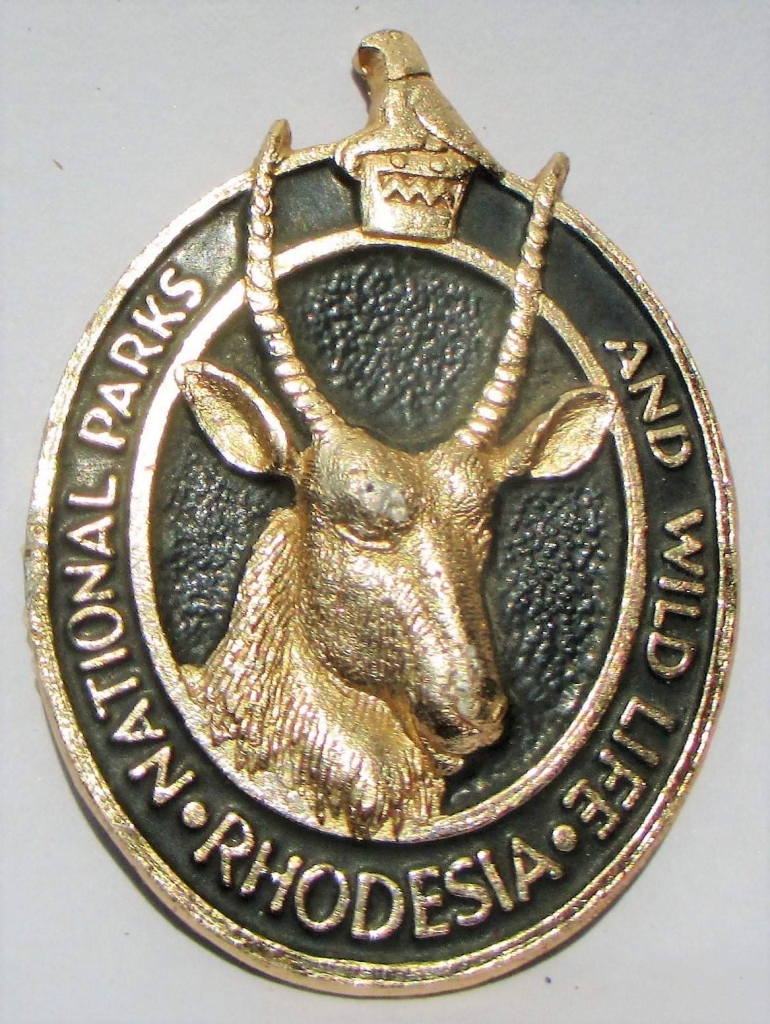
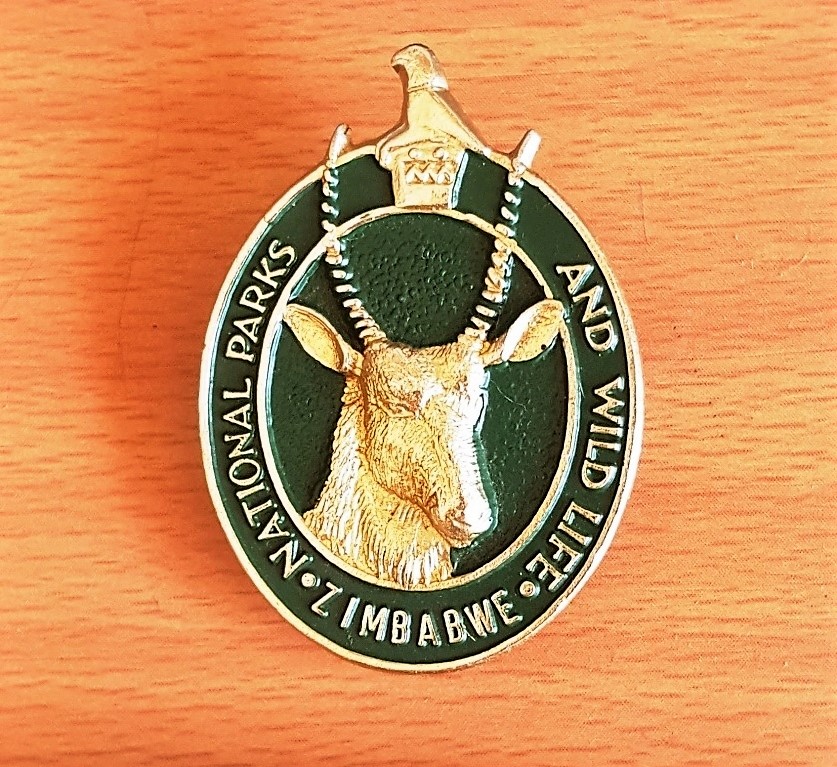
At the end of the day, something like Investigations Branch is going to be the square peg for the round hole. The realities of investigations and intelligence-gathering – police work – are going to be markedly different from wildlife management and research – biology. They will never meld. So really, none of Graham Nott’s detractors today were his peers. Men like Paul Russell, OBE, the former Director of Operations of Zambia’s Anti-Corruption Commission, which had embedded within it a “Species Protection Department”, and Col Piet Lategan of the South African Police Endangered Species Protection Unit were Graham Nott’s peers. I can’t think of a better way to sum up this topic than to quote Paul Russell, who was heavily involved in the suppression of wildlife crime north of the Limpopo during Graham’s tenure:
“I am sorry to learn that Graham had died: I did not know that. I got to know him quite well. I recall that he was the Chief Investigations Officer in the Wildlife Department. Not too many people know that I had an HF radio contact with him in his office in Harare with mine in Lusaka. We spoke regularly and I met him once in Harare and once in Hwange. I had much more faith in him than a lot of the other so-called ‘heroes’ at that time.” (The SSB link was news to me, but then Graham was responsible for the installation of encrypted Motorola station base sets for the Branch, and even in his day, especially in his line of work, you couldn’t trust the phones.)
Paul Russell kindly told me the following at the end of 2015: “What follows will probably reflect a bit more on the Russell/Nott relationship.
When the poaching of rhinos in Zimbabwe was at its height, poachers were crossing Kariba into Matusadona national park in Zimbabwe in homemade boats made out of canvas. The Zambian poachers were from a small town called Kaoma, originally called Mankoya that is located approximately 460 kilometres by road west of Lusaka. Kaoma lies west of Kafue National Park.
Why the poachers came from there is an interesting story, not known by many people.
In 1966/7, I was a Platoon Commander with the Police Mobile Unit, a Paramilitary Unit headquartered in Kitwe on the Copperbelt. I spent many months in a place called Shangombo in the then Western Province (now Barotse Province) of Zambia patrolling the border between Angola and Zambia. At the time, Angola was still under the control of the Portuguese who were fighting UNITA, under Jonas Savimbi, in that area.
If you look at the map of Zambia, you will see that the border between Zambia and Angola is a straight line: quite difficult to stop comings and goings!
As the fighting intensified in Angola, refugees from Angola started to trickle in to Zambia. This soon became a flood. The UNHCR quickly established a camp at Mankoya and it remained there for many years.
The poachers from Kaoma in the eighties were second-generation children of Angolan refugees, but because they were born in Zambia, were of course Zambian citizens. They were able to obtain firearms (AK-47s) easily by simply travelling by bus and foot from Mankoya back into Angola, usually carrying bags of mealie meal and around 500 kwacha, which was enough to get an AK-47 and ammo.
How do I know this?
Well, now I revert to Graham and me.
There had been a shootout in the Matusadona (I am not sure exactly where) but a number of corpses ended up in the mortuary at Hwange Hospital. I (in the ‘80s, now Director of the Anti-Corruption Commission) went there with a Zambian officer and met Graham. He arranged for us to see the bodies. They were of course unidentified.
I took photos of the corpses and on my return to Zambia got the photos blown up. I then took them to the camp at Mankoya and made them public, trying to find out who they were. Within a very short time, less than an hour, there was much wailing and some women, claiming to be the mothers of the deceased came forward and identified their sons. I thus got names.
I then used this as a (rather morbid, but effective) way to impress on those in the camp that this was the likely fate of anyone who went into Zimbabwe to poach. I like to think that it worked to some extent. It was here that I was told how the weapons were obtained.
The point I am making is that Graham and I fully cooperated on this, to his credit. If I had not been able to go to Hwange and get into that morgue, I would have had a lot more difficulty in finding out where the poachers came from. All we knew prior to this was that they came from Lusaka, which in fact was a stopping point for them en route to Zimbabwe, and on their return to sell the horns.
My relationship with the South African Endangered Species Protection Unit and the then Captain Lategan is another story! We did some very productive undercover work in Zambia together, and I visited SA and was a guest of the then SA Commissioner of Police in the Police HQ in Pretoria (handled delicately bearing in mind that Zambia and SA were still rather apprehensive of each other!)
You can see the origin of Zambia’s Species Protection Department in John Hanks’ books. I should mention that the creation of the SPD was with the blessing and approval of the Zambian President and the Director of the Zambia Parks and Wildlife Service, who seconded some members of staff to the ACC/SPD. We were thus able to take on poaching using two legal mandates: the Corrupt Practices Act and the National Parks and Wildlife Act (two strings to the bow, so to speak).
The de jure head of the ACC was a Judge of the Supreme Court in Zambia, a requirement under the Corrupt Practices Act. I ran all the operations of the ACC as Director of Operations (with the rank of Senior Assistant Commissioner) but I reported to him and through him to the President.”
Paul Russell’s anecdote above underscores how the war against poaching and illegal wildlife trafficking can be effectively carried out by professional law enforcement personnel – not as the whole, but as a very important piece of the puzzle. Quite simply, no one in Zimbabwe’s National Parks at the time could have developed the relationships that Graham Nott was able to with men like Paul Russell and Piet Lategan because they were members of a different club. And since the problem spanned borders, this sort of cooperation was and is essential.
I last saw Graham in the winter of 2002 when I went to visit him in a local Harare clinic. He was in the final stages of terminal cancer. But he was still alert, insofar as his medication let him be, and we had a good chat. I, for one, lay the blame for much of what’s wrong with African national parks and conservation in general on the fact that there aren’t any Graham Notts left any more. But then, I’m an anachronism too.
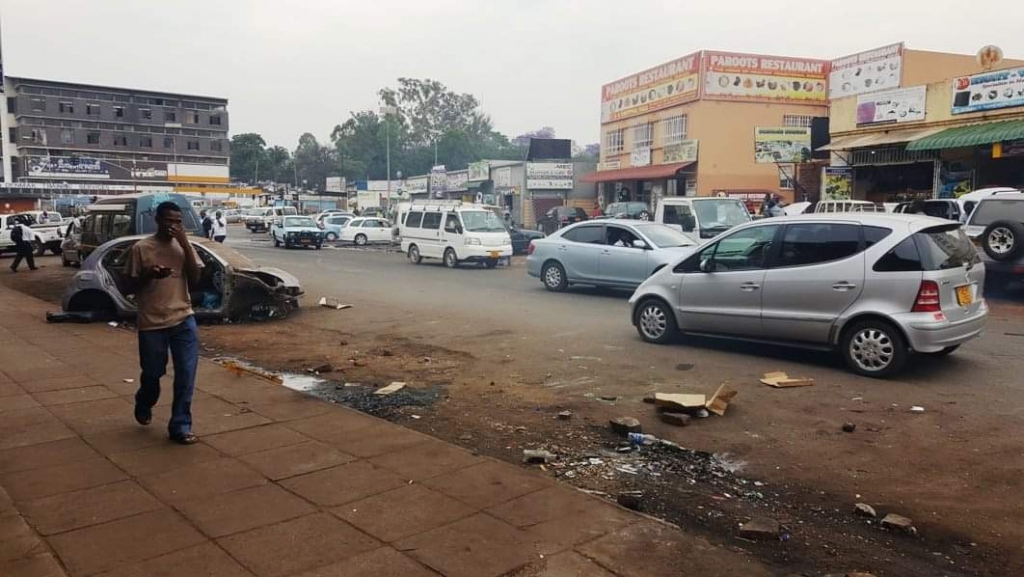

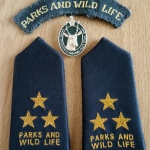
Leave a Reply
Want to join the discussion?Feel free to contribute!